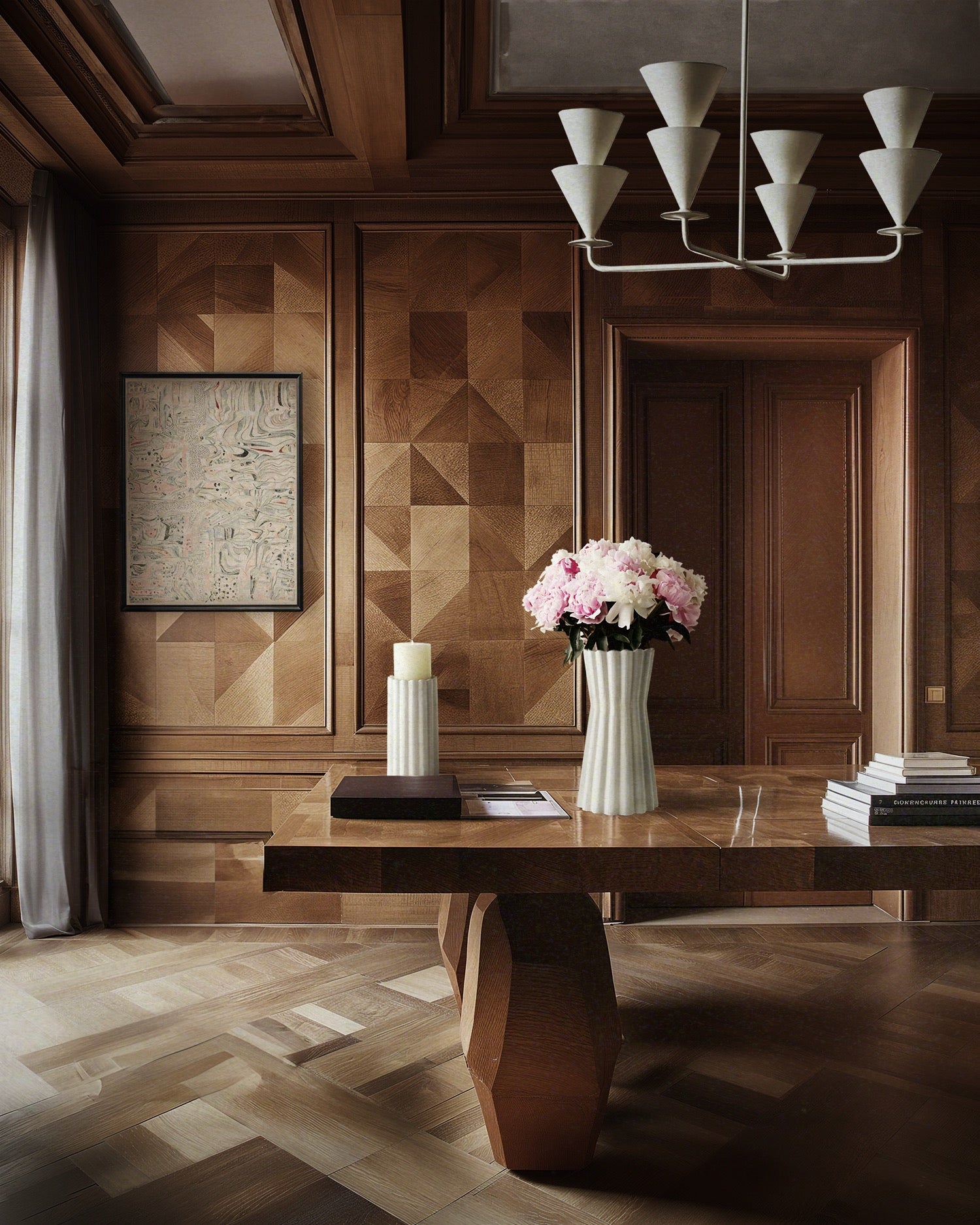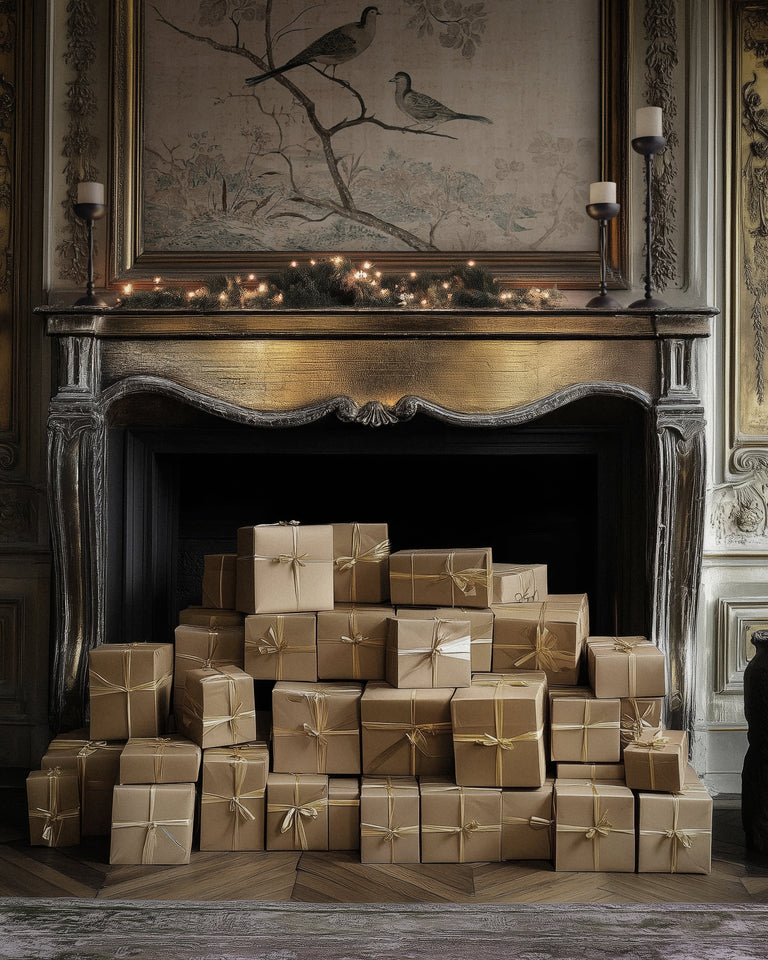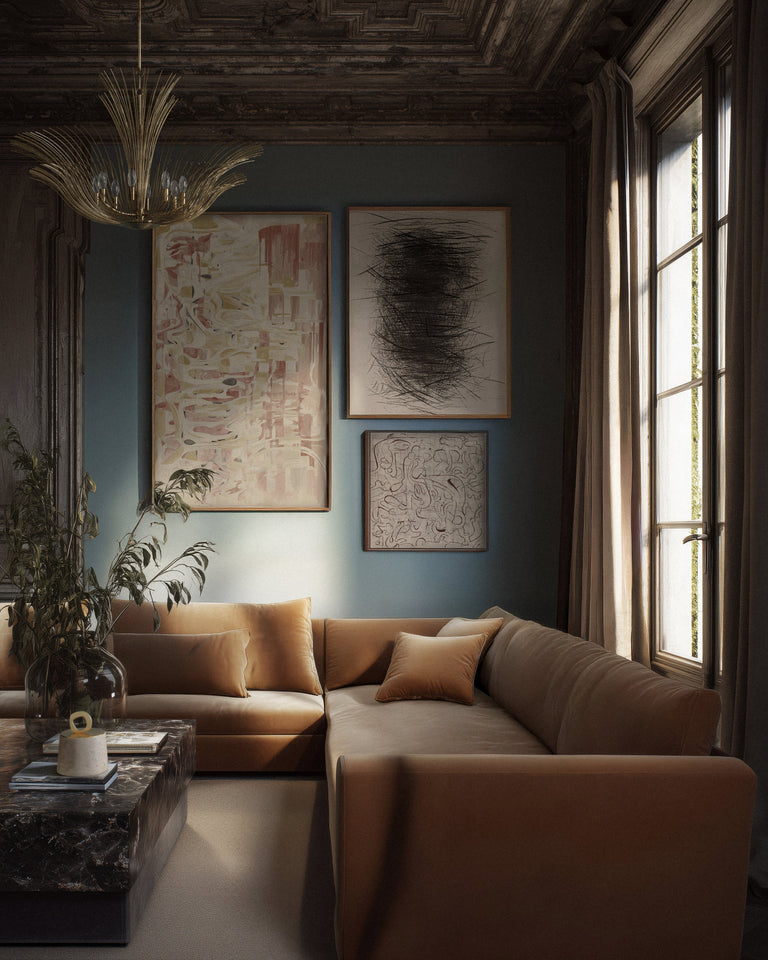
The Beauty of Marquetry: A Historical Craft in Modern Application
Marquetry, the intricate art of applying pieces of veneer to create decorative patterns, has been admired for centuries. Originating in ancient Egypt, this craft reached its zenith in the 17th and 18th centuries, particularly in France and Italy. Today, marquetry continues to enchant artisans and collectors alike, blending historical techniques with contemporary designs to create stunning works of art.

JEAN ROYÈRE, "Étoile" Sideboard From The Dumont Residence, France, 1958. Straw marquetry, oak interior.
The History of Marquetry
Marquetry’s rich history dates back to ancient civilizations, where craftsmen used precious woods, ivory, and other materials to adorn furniture and architectural elements. The craft evolved during the Renaissance, with masterful examples seen in the works of André-Charles Boulle, whose intricate designs became synonymous with luxury and sophistication.

Cabinet in BOULLE Marquetry and Queen Marquetry, Napoleon III Period.
The Craftsmanship Behind Marquetry
Creating marquetry involves painstaking precision and an eye for detail. Artisans select various veneers, often of different colors and grains, to piece together intricate designs. The veneers are cut, assembled, and then adhered to the surface of the furniture or artwork. The final step involves polishing and finishing, enhancing the depth and richness of the materials.

JEAN-MICHEL FRANK (1895-1941), IMPORTANT CABINET, CIRCA 1925
executed by Chanaux & Pelletier, Paris straw marquetry, iridescent yellow peroba, avodire.
Marquetry in Modern Design
In the contemporary design world, marquetry is experiencing a renaissance. Modern artisans and designers are incorporating this age-old craft into current trends, creating pieces that blend traditional craftsmanship with modern aesthetics. Today’s marquetry might include unconventional materials such as metals, plastics, and even digital prints, pushing the boundaries of what marquetry can be.

JEAN ROYÈRE, Wardrobe, ca.1950, Wood, straw marquetry, brass, glass applications of marquetry
Marquetry’s versatility makes it a favorite among designers for various applications:
1. Furniture: From elegant coffee tables to bespoke cabinetry, marquetry adds a touch of sophistication and uniqueness.
2. Interior Design: Wall panels and flooring featuring marquetry designs bring an artistic flair to interiors.
3. Fine Art: Contemporary artists are using marquetry techniques to create visually stunning artworks that are both traditional and avant-garde.
4. Luxury Goods: High-end items such as watch faces, jewelry boxes, and even car interiors showcase the beauty of marquetry.

The Future of Marquetry
As sustainable design becomes more prevalent, marquetry offers a method to repurpose and highlight the natural beauty of wood and other materials. Innovations in technology also provide new tools for artisans, allowing for more precise cuts and complex designs.

The historical craft of marquetry, with its meticulous craftsmanship and timeless beauty, continues to inspire and captivate in the modern era. Whether used in furniture, interior design, or fine art, marquetry remains a testament to the enduring allure of handcrafted artistry. By blending tradition with innovation, modern marquetry keeps this ancient art form alive and relevant, ensuring its beauty is appreciated for generations to come.
Recent Edits



